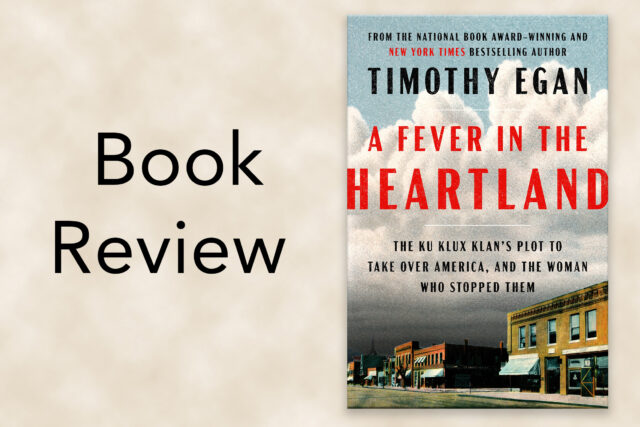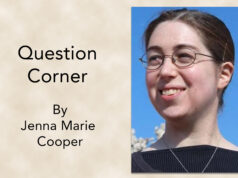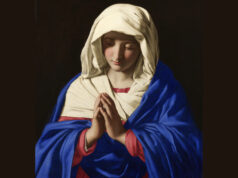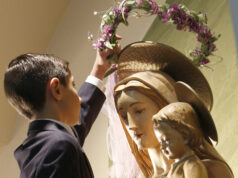Dr. Schleich, a history professor at the Jesuit university where I was a student decades ago, was launching our world history survey class.
It was a required course, so I sat amid a huge classroom full of intimidated freshmen as Dr. Schleich made his introductory remarks.
“Remember,” he said drolly, “those who fail to learn from history are condemned to repeat it.”
We all chuckled nervously at his implication: Do well or you’ll be here again next year.
But of course, he was quoting, loosely, from the philosopher George Santayana, who suggested that society must learn from its past or repeat its mistakes.
Those words from Dr. Schleich kept coming back to me as I read Timothy Egan’s engrossing new book, “A Fever in the Heartland: The Ku Klux Klan’s Plot to Take Over America, and the Woman Who Stopped Them.”
The Klan had its birth in the post-Civil War days, when disheartened Confederate soldiers and sympathizers plotted to suppress the newly freed blacks and retain some of the power and prestige of the Old South.
But what many don’t realize is that, in the early 20th century, the Klan had an enormous resurgence in the north, particularly in the midwest.
Boatloads of immigrants from Eastern Europe, including many Jews, were arriving on America’s shores. My husband’s grandparents all came from Italy in the years before 1920. The Irish, with their Papist ways, continued to come.
The Klan had its targets: Blacks, Jews and Catholics.
‘We need to defend the truthful teaching of American history, because if we don’t, we may have to repeat it.’
Egan’s story revolves around a charismatic leader, David C. Stephenson, who rose to power as the Grand Dragon of the state of Indiana, where nearly one in three native-born white men joined the Klan.
Stephenson was a violent rapist, an alcoholic, a liar who invented his past. But at the height of his power he controlled legislators, judges, police departments and had his eye on the U.S. Senate. The story of his undoing is fascinating.
But the larger picture is a part of American history that we like to forget.
It was a time when Americans flocked to see “Birth of a Nation,” the racist film based on the book “The Clansman: A Historical Romance of the Ku Klux Klan.” The film was shown and praised at the White House by President Woodrow Wilson.
It was the time of Prohibition, spurred in part by immigration: There were the Italians with their red wine, those German Catholics opening breweries, those Irish with their love of whiskey.
It was a time of redlining Blacks out of white neighborhoods. It was a time of lynching.
Stephenson hoped to intimidate and destroy the University of Notre Dame. A Klan rally of over 2,000 resulted in a fight there, and some students bought potatoes from a nearby grocery and hurled them at the car of the fleeing Grand Dragon.
This gave rise, according to Egan, to one version of how Notre Dame became the “Fighting Irish,” as Irish American boys rioted “with the iconic food of their tribe.”
That version of the nickname’s origin may be apocryphal, but it reminds us that we as Catholics have moved into the mainstream of American life, where we have an obligation to defend the victims of racism and hate.
A shrunken Klan still exists, a small part of a large landscape of hate groups and white supremacists, which, like the Klan of old, lives in secrecy, violence and a false sense of Americanism.
We need to defend the truthful teaching of American history, because if we don’t, we may have to repeat it.
Effie Caldarola is a wife, mom and grandmother who received her master’s degree in pastoral ministry from Seattle University.
The Dialog provides readers news to your inbox with the Angelus e-newsletter. Sign up here for a free subscription to the Angelus.







